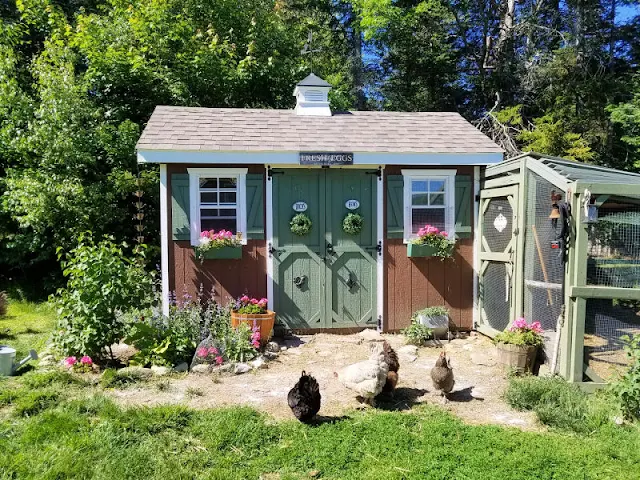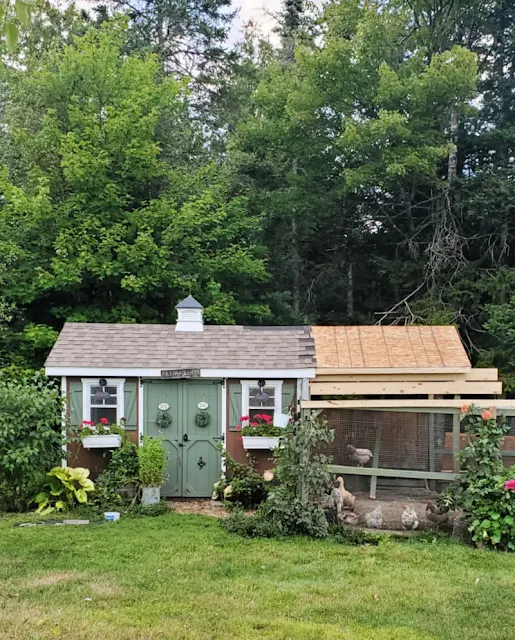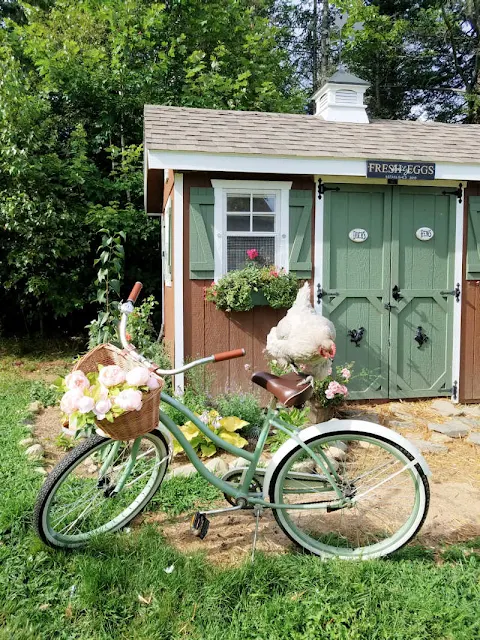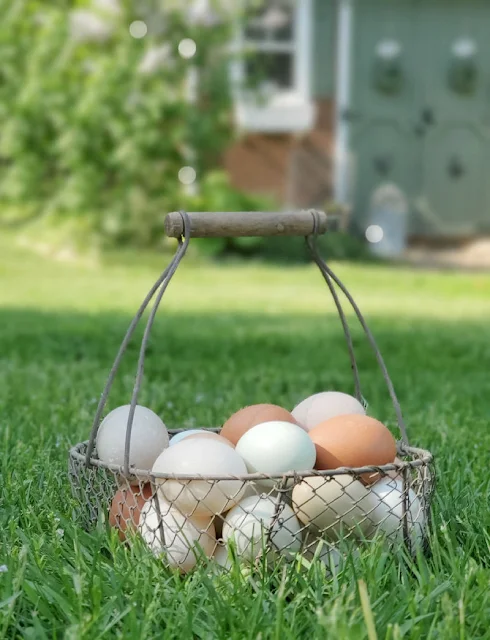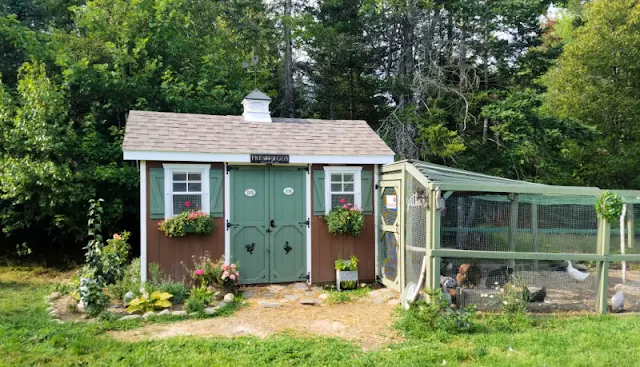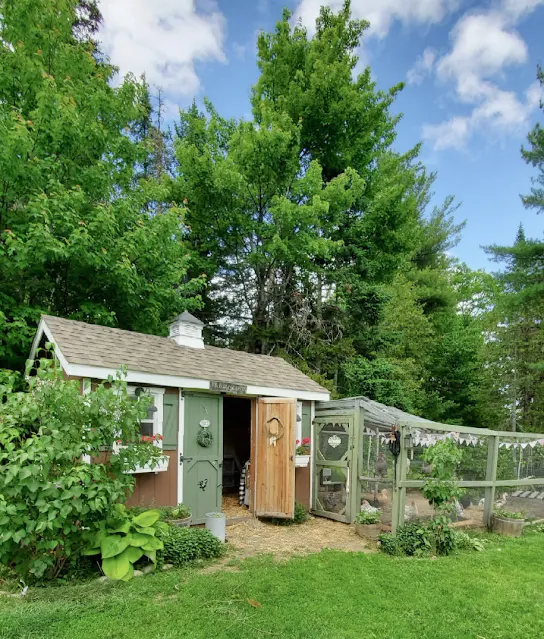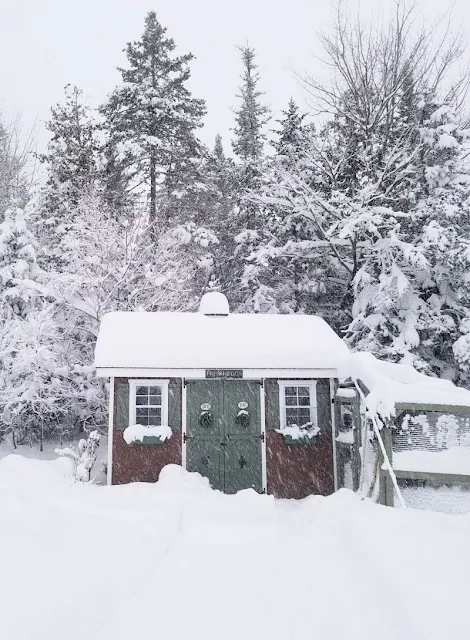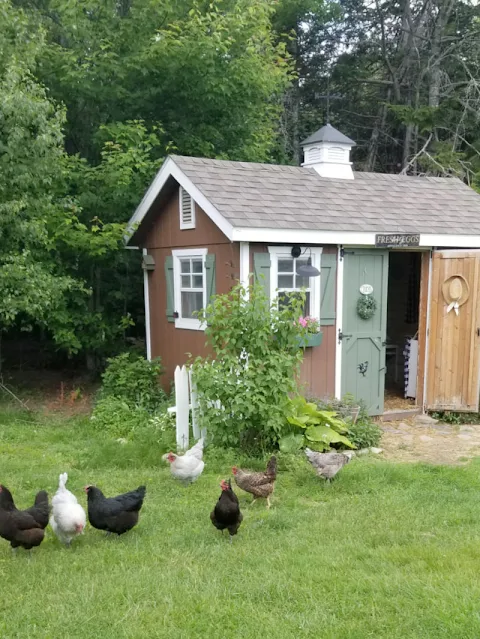Choosing the Best Location for your Backyard Chicken Coop
Choosing the best location for a chicken coop is one of the most important decisions in getting started with a backyard flock.
Chickens need a secure home to sleep in and lay their eggs in. Called a chicken coop or hen house, it can be built from scratch, assembled from a kit, purchased turnkey or repurposed from a shed or playhouse. But regardless, the chicken coop location is of utmost importance.
The ultimate position of the coop is critical for your chickens' health, happiness and, of course, safety.
As such, there are several considerations to take into account when determining the placement of your chicken coop.
And the position for your coop will be very unique to your property, although there are a few universal guidelines to follow that might help you narrow down several possible locations.
Because we live in Maine, we very consciously positioned our coop in full sun, facing south, with a dense stand of trees to the north. This ensures that the coop gets the most sun it can during the long, cold winter months and is blocked from cold blasts of wind from the north.
I chose a walk-in coop style that had nesting boxes inside instead of jutting out from an exterior wall. The nest boxes are on the southern facing wall, again, to ensure they get the most warmth from the sun to prevent frozen eggs.
Our run is situated to the east of the coop. That means it gets the first sun of the day and starts to warm up early in the morning as soon as the sun rises. It is also sloped a bit so it drains and there's no standing water after a rainstorm.
Other things to keep in mind when you're choosing a location for your chicken coop include:
- Distance from the house
- Distance from feed and supply storage (if you don't have room inside your coop)
- Location of your water source
- Ability to drive up to the coop to delivery feed/straw etc.
Choosing the Best Location for your Backyard Chicken Coop
Here are some steps to take that can help you choose the best location for your coop before you even order a coop or you start looking for plans or building your own coop.
Check Variances and Regulations
The first thing you need to do is check your local regulations concerning building or buying a chicken coop. Things such as the minimum distance from both your house and neighboring dwellings and the required distance from your property line are important to know before you go any further.
Some areas don't specify anything as far as coop placement goes, but it's still important to consider your neighbors.
Backyard Chicken Coop Concerns
The main concerns when it comes to a chicken coop are:
- odor/manure
- flies
- noise
You don't want to be bothered by any of these, and neither do your neighbors.
So be considerate and make sure that where you decide to put your chicken coop isn't going to result in the heady scent of chicken manure wafting across the lawn and towards your neighbors home.
Although a well-maintained coop and healthy chickens shouldn't smell, there still is a certain odor attached to any type of livestock that all neighbors might not appreciate.
And remember that chickens poop on EVERYTHING, and the closer to your house the coop is located, the greater chance your chickens will venture onto your porch, deck, vehicles, etc. and hosing or scraping chicken poop off your deck chairs and every other flat surface will become a full-time job!
And even with the best intentions, there are certain times of the year when flies will become a bit of a problem, so keep that in mind as well. Chicken feed and droppings naturally attracted insects and also rodents, so positioning your coop too close to another dwelling is just asking for trouble.
Lastly is the noise factor. Although many localities don't allow roosters, even a flock of all hens can make quite the racket when they're laying their eggs. So keep that in mind as well. Having a fence, hedge or even several trees between your coop and your neighbor's house to lessen the noise will be greatly appreciated.
Of course the size of your property might ultimately limit how far away from everything your coop can be located.
Keep your Feathered Friends Close
While there are lots of reasons to position your chicken coop as far away from your house as possible, there are also some good reasons to pick a location that's a bit closer and more convenient.
Since you're likely going to find yourself making multiple trips back and forth from your house to your chicken coop with water buckets, to collect eggs, or just to check on your chickens, locating your coop fairly close to your house isn't a bad idea.
You'll really appreciate the convenience on cold or wet days!
If you're going to run a water and/or electric line to the coop from the house, think about the added cost of running longer lines the further away your coop is located.
And if you don't plan to have running water at the coop, then think about hauling buckets of water from the house or connecting a hose (or a few hoses) to do periodic coop cleaning.
Another good reason to choose a location not too far from your house is for safety. If they are closer, you can more easily keep an eye on them. You'll be able to hear if a predator spooks them, and get to them faster if something tries to get into the coop at night.
And if you plan on letting your chickens free range, the closer the coop is to the house, the more likely they'll also stick closer to the house while they're roaming.
Lastly, think about where you usually sit in the house and look out the window, or if you sit on the porch, which direction does that face. You'll be depriving yourself hours of year-round entertainment if you can't see your coop (and chickens) from that window.
But also consider, if you have a rooster especially, you might not want to put your coop right under your bedroom window. Roosters don't only crow at sunrise, although they certainly ramp up their efforts as the sun rises and sunrise in the summer can be as early at 5am in the summer in northern climates.
Bottom Line: Position your coop close enough to the house for easy cleaning, egg collection and daily chores, but far enough to keep flies, rodents and odors from your home.
Take the High Ground
Optimally, you want to position your chicken coop on level, high ground, with the run slightly sloped down away from the coop, if possible, to allow water run off, and to prevent flooding and resulting minimal mud. Low spots in your yard will tend to get muddy, foggy and get covered in more frost in the winter.
Throw A Little Shade - on your Chicken Run
It's going to be perfect if your run has natural sunny and shady areas. Use existing trees and other plants on your property, if possible, to accomplish that. Trees and shrubs are helpful in providing shade, a little breeze, and some protection from the elements (rain, snow, etc.)
As an added bonus, insects that the chickens will love to eat tend to congregate in the ground around the base of trees and shrubs.
Be sure to do a little research about the trees, shrubs and other landscaping you have in your yard first though. Some plants can be toxic to chickens like azalea, rhododendron and oleander, while things like grape vines or fruit trees can provide not only shade and a windbreak but also a tasty snack.
And remember that trees can come down in storms and not only destroy your coop and run, but possibly injure your chickens as well.
And if the storm happens at night and you don't hear it, the damage might allow a predator to gain access to the coop and your chickens before you wake up and are able to repair the damage.
So be careful not to locate your coop under old, damaged or diseased trees.
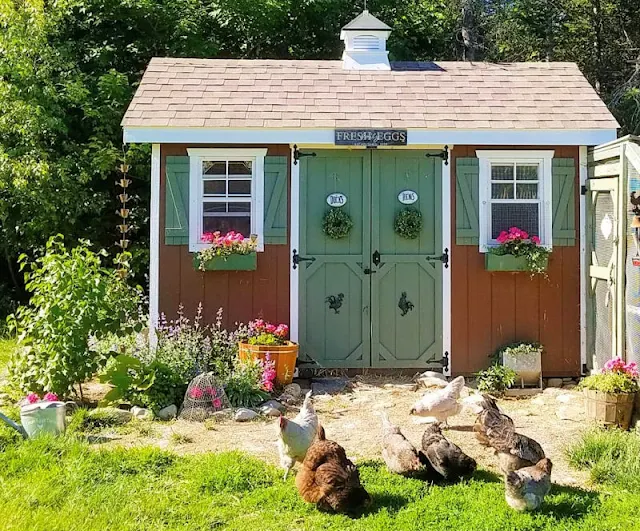
Hot Climates
Cold Climates
All Climates



